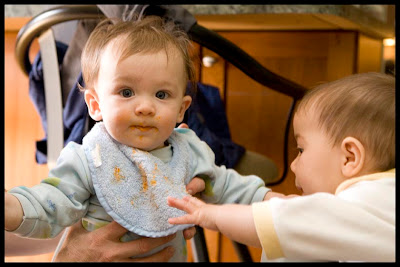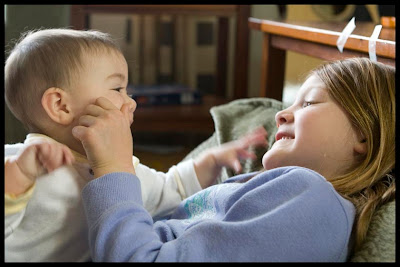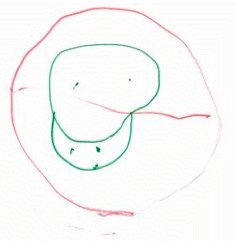Although I think we would have ‘found’ attachment parenting eventually, it was our daughter Sophia, born in Guatemala and now 5.5, who showed us the way.
As Ann and I waited for the adoption process to move through its steps we kept busy preparing for her arrival. We blindly went out and bought her a crib, a high chair, and all of the other products whose makers work hard to persuade parents-to-be that they cannot possibly parent a baby without. I enjoy shopping far too much and was only too eager to buy adorable pint-sized clothing, furniture and accessories. When the waiting felt hard, I would look into the nursery and visualize her sleeping in her crib.
Then, when she was 2.5 months old, we traveled to Guatemala to meet her. Her foster mother brought Sophia to our hotel to stay with us. She showed us how to rock her to sleep–an intricate dance with specific moves! We were able to easily rock Sophia to sleep in this way. We then gently lay her inside the crib in the hotel room. And she promptly woke up and communicated to us with her cries, “No, thank you, crib!” We tried this several times, and finally let her just lay in our arms…she slept like the proverbial baby. We mused that Sophia must co-sleep with her foster family, as this was the only way she would sleep with us.
On our last night during that first visit, I enjoyed dinner at Sophia’s foster family’s home. Poor Ann was sick in the hotel. I got to see where Sophia was living and being loved until she would come home to our family. There was a pack-n-play in Sophia’s foster mom’s room and a king-sized bed. I asked if Sophia slept in the bed with her foster mom. She sheepishly answered yes. She was hesitant to share this as it was against ‘the rules’ of the facilitator who thought American adoptive parents would expect their children-to-be to sleep in a crib.
I assured her that we simply wanted Sophia to be happy and healthy and she clearly was.
Ann and I returned home from Guatemala and immediately began looking for a new bigger bed for when Sophia came home. (New sheets, new comforter…I was on board for more shopping!) We also began exploring thoughts and ideas about co-sleeping, which led us to explore attachment parenting. Prior to this, my focus in reading and preparation as a prospective adoptive parent had all centered on adoption and transracial adoption issues. Now, I turned my attention to parenting approaches and found that Sophia had led us to the only approach that made sense for adopted children.
Adopted children endure the loss and separation from at least one family prior to their adoption, if not more than one. Sophia experienced the separation from her birth mother as a newborn and then the loss of her foster family, and all that was familiar to her, again at age 7.5 months when she came home to our family. Our next daughter, Olivia, born in a traumatic birth at 29 weeks of gestation, endured many losses including the loss of her twin sister at their birth, the loss of her birth mother, the loss of gestational time (early eviction on a 9 month lease!) and then loss of oxygen directly prior to her arrival. Even our youngest child, Walker, whom we met upon her birth, had spent nine months with her birth mother and was very suddenly without her voice and her bodily rhythms. Attaching and bonding clearly needs to be the focus for any adoptive parent upon a child’s homecoming.
Co-sleeping creates a powerful opportunity for attachment and bonding on so many visceral and primal levels. Sophia slept sandwiched between us and thus between the rhythms of our bodies. She craved skin-to-skin contact and curled up against us each night. Our bed felt and smelled like the combination of her and us.
It is in this way, night after night of cuddling and breathing in each other, that we began not only to begin identifying as an attachment parerenting family, but also how we became a family. In listening to our new daughter’s needs, she led us to an approach and parenting community that continues to help our family not only to mindfully listen to our children’s needs, but also to strive to balance those needs and create family harmony.
– Diana Robinson

 During the last weeks of my pregnancy we decided to have our infant car seat installed by certified professionals at the local sheriff’s office. We got our car on
During the last weeks of my pregnancy we decided to have our infant car seat installed by certified professionals at the local sheriff’s office. We got our car on 

 First of all, I believe that, in the majority of cases, birth is a normal, natural and healthy process. I believe in a woman’s (and my own) ability to give birth naturally, normally and without intervention, as women have been doing for thousands of years.
First of all, I believe that, in the majority of cases, birth is a normal, natural and healthy process. I believe in a woman’s (and my own) ability to give birth naturally, normally and without intervention, as women have been doing for thousands of years.


